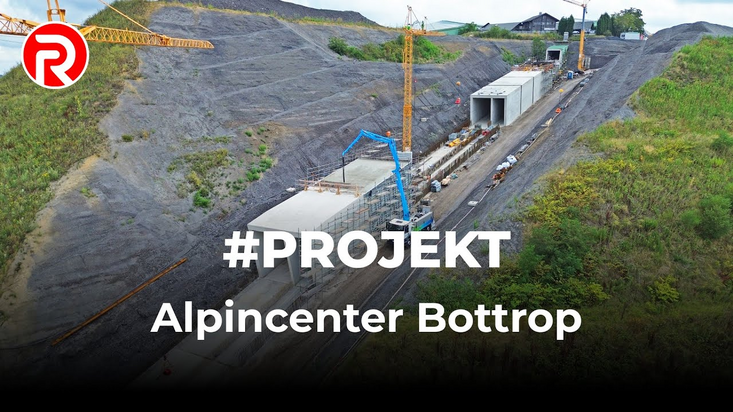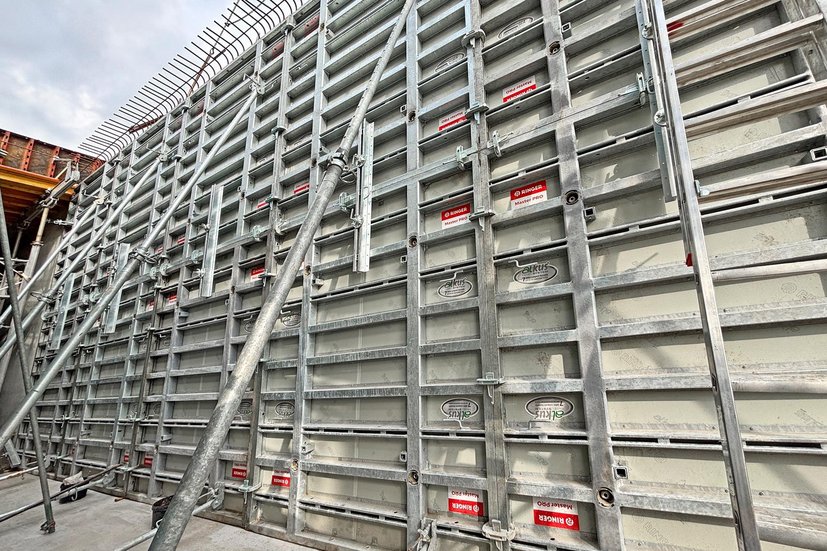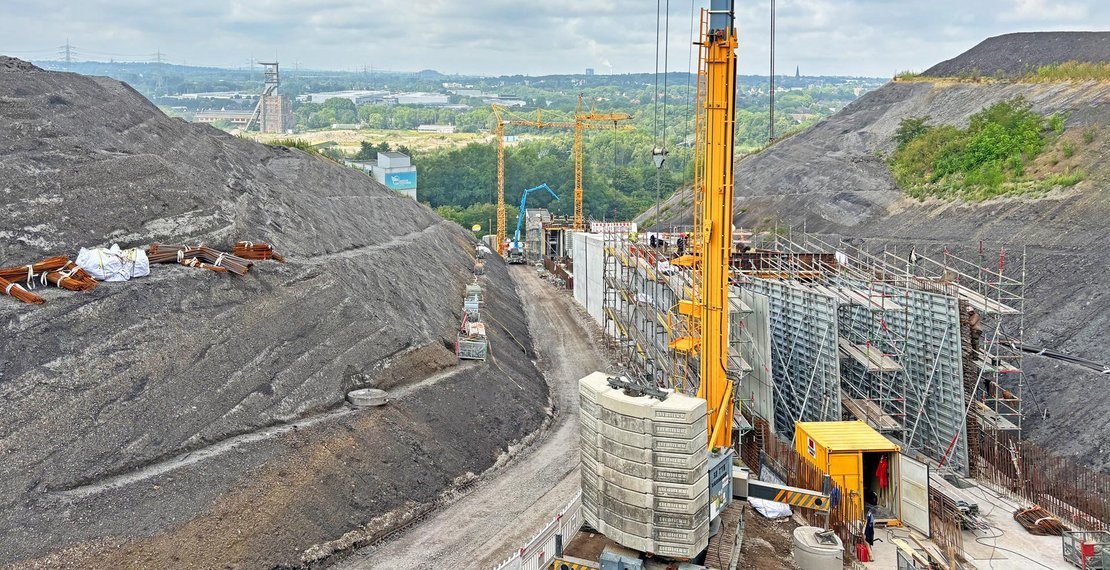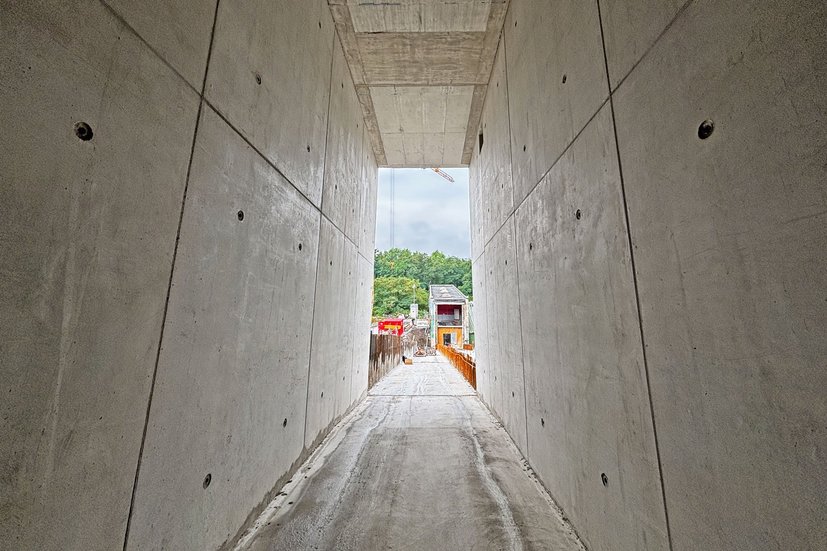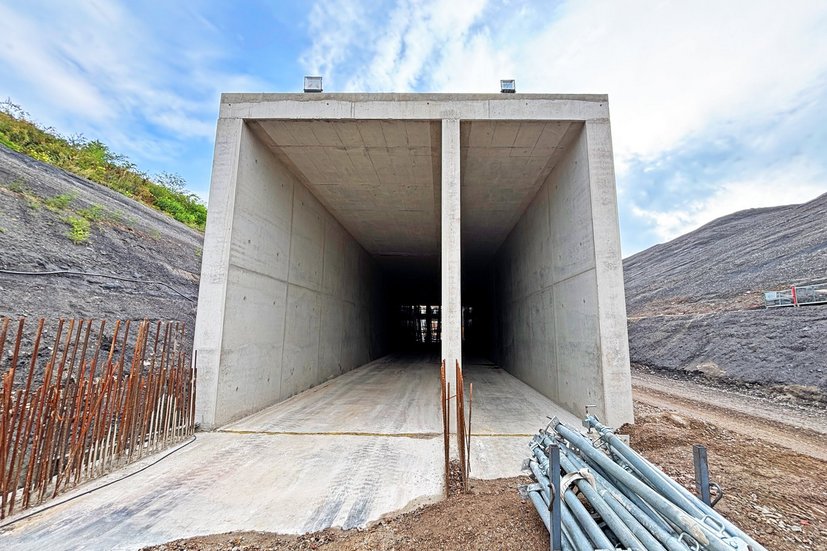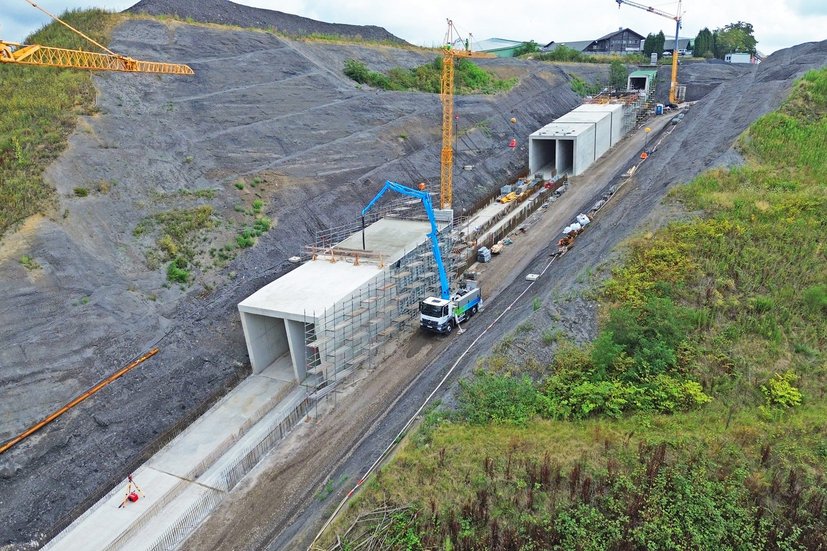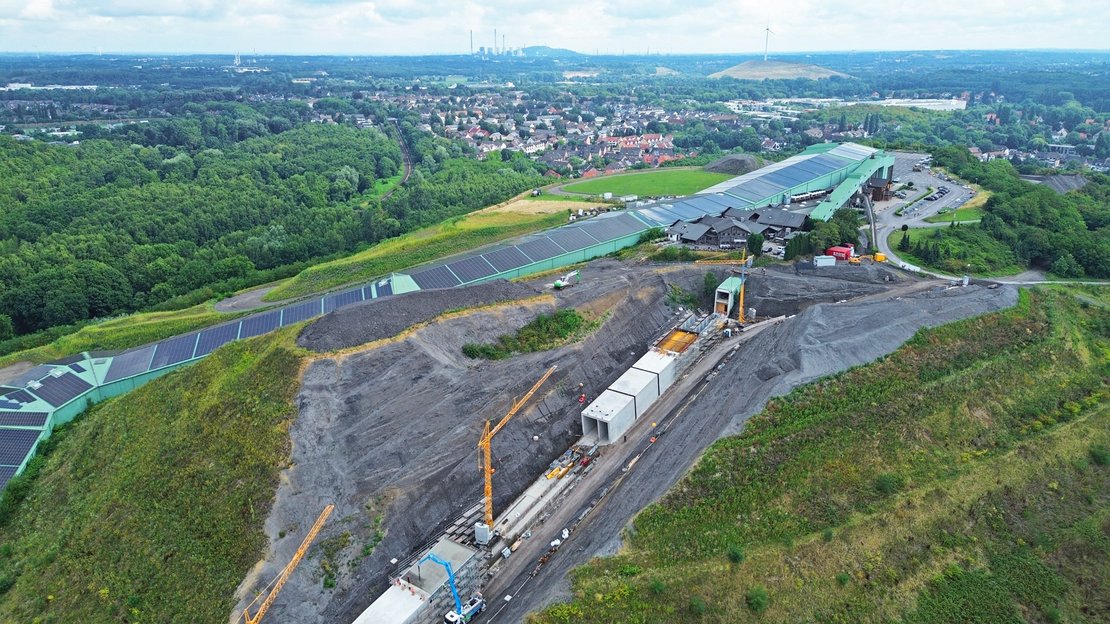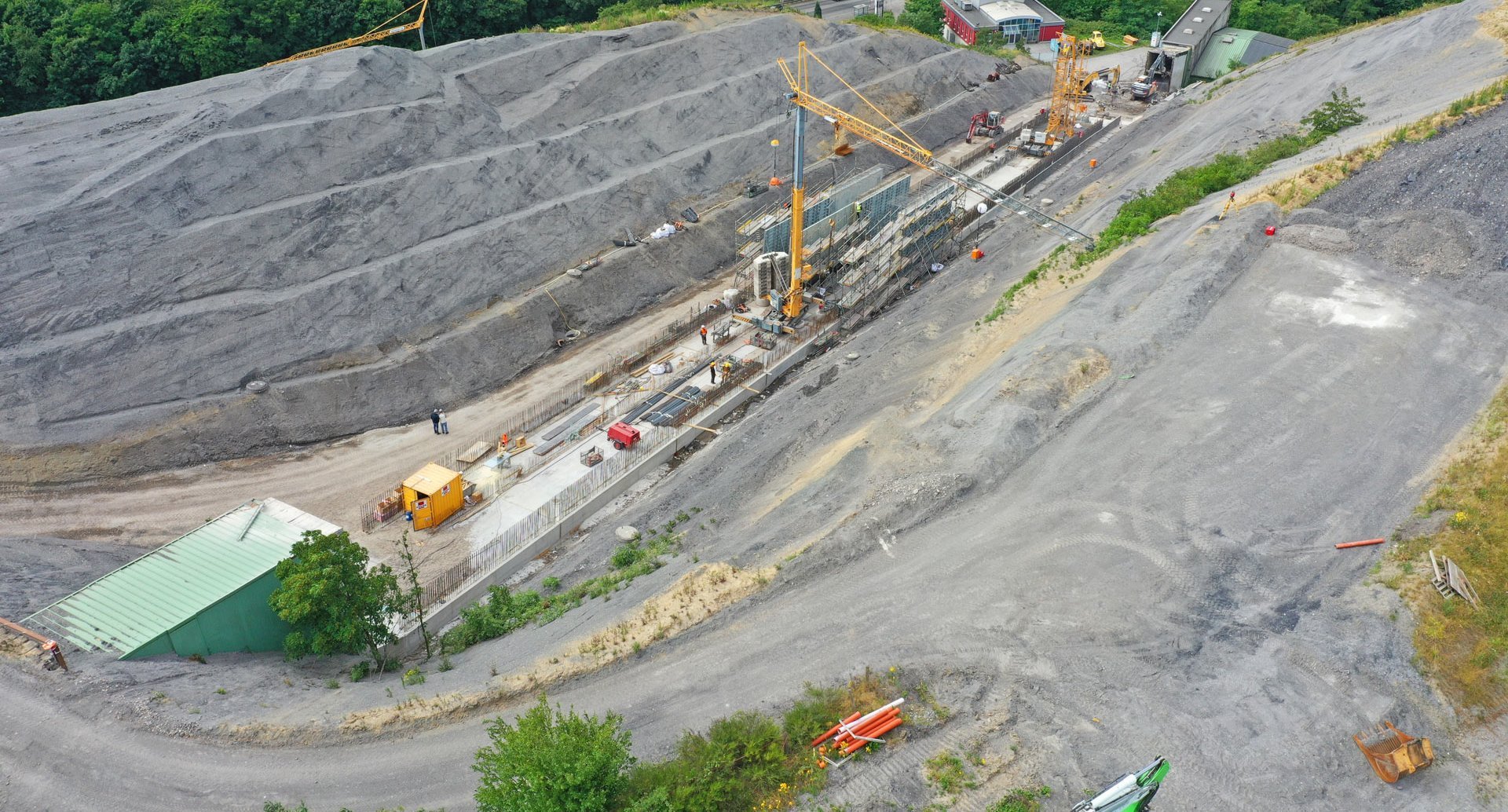
A spectacular construction project is being realised at the Alpincenter Bottrop. A new lift tunnel is being built on a former spoil tip of a coal mine, which will transport winter sports enthusiasts underground from the valley directly to the ski slope in future. With a slope length of 640 m, the Alpincenter is considered the longest indoor ski hall in Europe, and the current construction project is also setting new standards.
In order to further modernise the infrastructure, the old 200-metre-long lift tunnel, including the emergency tunnel, will be completely dismantled. In its place, a structurally optimised new facility will be built with significantly improved load-bearing capacity, smoke extraction and safety in the event of evacuation. The technical and logistical requirements are enormous: the construction site is located on a steep slope with a gradient of up to 23.4%. In addition, space is limited, which necessitated the use of crawler cranes and sophisticated planning and formwork technology from RINGER.
1 m thick floor slab formed with Stahl Master
The floor slab of the new lift tunnel marks the start of construction. It was constructed over a length of 200 m, with a width of 8 m and a thickness of 1 m, forming a solid reinforced concrete structure with high load-bearing capacity.
RINGER's robust Steel Master formwork was used here. This wall formwork system is designed for high fresh concrete pressures and remains dimensionally stable even with large component dimensions.
1,400 m² formwork on a 200 m tunnel length
The central component of the project is the 200 m long lift tunnel. The 6 m high walls with a thickness of 50 cm were constructed using the Master PRO single-sided steel frame formwork with Alkus facing.
Two 3 m high elements were combined on top of each other. Three continuous wall panels were formed along the entire length of the tunnel.
The use of RINGER Master floor supports enabled the structure to be securely fixed in place, even on steep terrain. In addition, alignment props ensured that the individual formwork elements were precisely aligned. Even a bend in the slope could be easily accommodated thanks to the flexibility of the Master PRO.
3 sections in 17 cycles
The walls were constructed in 17 sections, each approximately 12 m long. Three sections were formed simultaneously per cycle, allowing three sections to be concreted in a single run.
Working on several areas in parallel enabled a high cycle speed with optimal personnel deployment. This meant that the tight schedule could be reliably adhered to despite the challenging terrain and weather conditions.
Two shifts, 30 workers, over 4,000 m³ of concrete
Construction is progressing in two shifts with up to 30 skilled workers per shift. A total of around 850 tonnes of reinforcing steel and 4,300 m³ of concrete are being used.
This corresponds to the interior volume of more than 14 single-family homes. Once the concreting work has been completed, the excavated material from the side slopes will be refilled above the tunnel.
